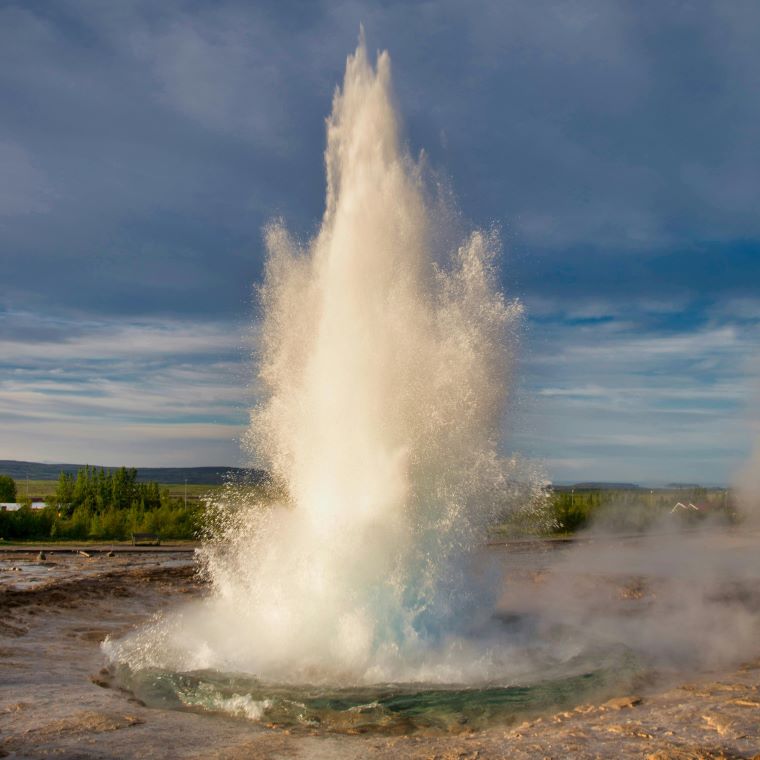
Arches are majestic yet fragile stone arcs, often sculpted over millions of years. These natural wonders form through erosion, where wind and water gradually carve away rock to create graceful, curved formations. Each arch is unique, highlighting the unique material of the rock and the power and beauty of nature’s sculpting tools. Individual arches have been found in every state in the United Stats and may possibly exist in most countries. However, there are only a few rare places on the planet where these captivating structures cluster, turning landscapes into outdoor galleries.
.
9. Serrania de Cuenca, Spain
In western Spain, a 2.5 hour drive from Madrid is Serrania de Cuenca Natural Park. The Ciudad Encantada and Los Callejones areas of the park house several arches. These are limestone arches have been dissolved by water. Water has sculpted the rock into various fun shapes. The Serranía de Cuenca is accessible by car from the city of Cuenca, which is the main gateway to the region. From Madrid, it takes approximately 1.5 to 2 hours to reach Cuenca by car via the A-3 and AP-36 highways. Once in Cuenca, local buses or taxis can take visitors to various points of interest within the Serranía de Cuenca. The region offers numerous hiking trails and nature walks, suitable for exploring the areas natural beauty. There are visitor centers and information points in Cuenca and other nearby towns that provide maps, guides, and information about the area’s attractions and trails.

8. Aveyron and Ardeche, France
The south of France is home to a surprising number of arches. The natural Arch and Bridge society has recorded 1,300 arches throughout the country as of 2020. These arches are primarily made of limestone dissolved by flowing rivers, technically making them natural bridges. However, this is not always the case. Access to the arches is not difficult but they are spread out. It is best to research locations beforehand or seek out a local guide in order to ensure you find them.

7. Guangxi & Guizhou Provinces, China
Arches in China have their own character. Most are not made of sandstone. Instead, they are made of granite, limestones or conglomerates. Materials that favor the formation of gigantic solitary arches. These large arches are scattered around the Guangxi and Guizhou provinces. Among them, Fairy Bridge, on the Budine men holds the record for the longest spanning arch in the world. All the arches in this southwest region of China are known tourist destinations. They are accessible by car and paved roads. However walking up long stairways may be required to get a closer look.

6. Wadi Rum, Jordan
Wadi Rum is home to a handful of arches. They are also called rock bridges for their wide spanning shape. The village of Wadi Rum acts as the gateway. It closely borders Israel, Egypt, and Saudi Arabia and shares the same sandstones. Although highway vehicles can enter the conservation area Bedouin guides are available to take travelers in by horseback or 4 wheelers. Hiking through the sandy desert is also an option. The arches are not marked and take some exploring to find them.

5. Hisma Valley, Saudi Arabia
Saudi Arabia does not have many arches but those it does have are quite large and more accessible than some other locations on this list. They form in the Saq formation, an extention of the arches in the Disi formation in Jordan The sites are only a 6 hour drive away from each other. At least 6 impressive arches can be reached by normal car from the town of Al Ula. The most famous being Elephant Arch which as its, name implies is shaped liked a giant elephant. If you don’t have a 4 wheel drive vehicle be prepared to walk through sand to reach the arches. Tour guides are readily available.

4. Ennedi Plateau, Chad
The Ennedi Plateau, also called the Ennedi Massif is yet another sandstone covered plateau filled with arches.This UNESCO heritage site is home to hundreds of arches. Many of them are quite large, up to 300 meters high.The arches also have a lot of character, forming shapes not seen anywhere else. Access to the plateau is very limited due to the state of the country. Infrastructure is poor and highway banditry is not unheard of. Extensive planning is required
to access the plateau. Local guides are not likely to be available.

3. Tadrart Rogue, Tassili National Park, Algeria
The Acacus Mountains are full of sandstone arches. The mountain range, in the Southeastern portion of the Sahara desert, crosses the Algeria-Libya border. From the Algerian side the mountains are in the south end of Tassili National Park, an area call Tadrart Rogue. The exact number of arches is unrecorded but they are infrequent. They span between 1 to 20 meters tall. Access is limited. The terrain is challenging and requires a 6 hour jeep ride. Guides are available and required. Being in the remote Sahara desert be prepared for hot and arid conditions.

2. Akakus Plateau, Libya
The Akakus Plateau also called Tadrart Acacus is the Libyan portion of the Acacus Mountains. The border between Libya & Algeria is closed so a different access route is required to reach the Akakus plateau. The plateau is also known for being a prehistoric rock art site dating back over 10,000 years. These arches are comparable to their Algerian counterparts. However, access is even more remote. Al Uwaynat the nearest town is 220 miles from an airport. Four wheel drive is required to travel the sandy and rocky terrain. It is recommended to secure a guide before entering the remote and plant-less mountains.

1. Colorado Plateau, USA
The Colorado Plateau spans the 4 corners region of the United States, covering portions of Utah, Colorado, New Mexico, and Arizona. There are over 2,000 arches in Arches national park alone, with thousands more spread around the plateau in various national parks and monuments. The majority arches are created by the entrada formation while a lesser number are formed in the Navajo sandstone. Perhaps the most famous being delicate arch in Arches national park. Archer is very accessible from interstate 70 and the nearby town Moab. However, be prepared to Travel 5- 6 hours if driving from an airport. For a Shorter drive from an airport consider Zion national park and the St. George area, a 2.5 hour drive from Las Vegas.

If you want to learn how arches are made check out the Geo Recipe!













